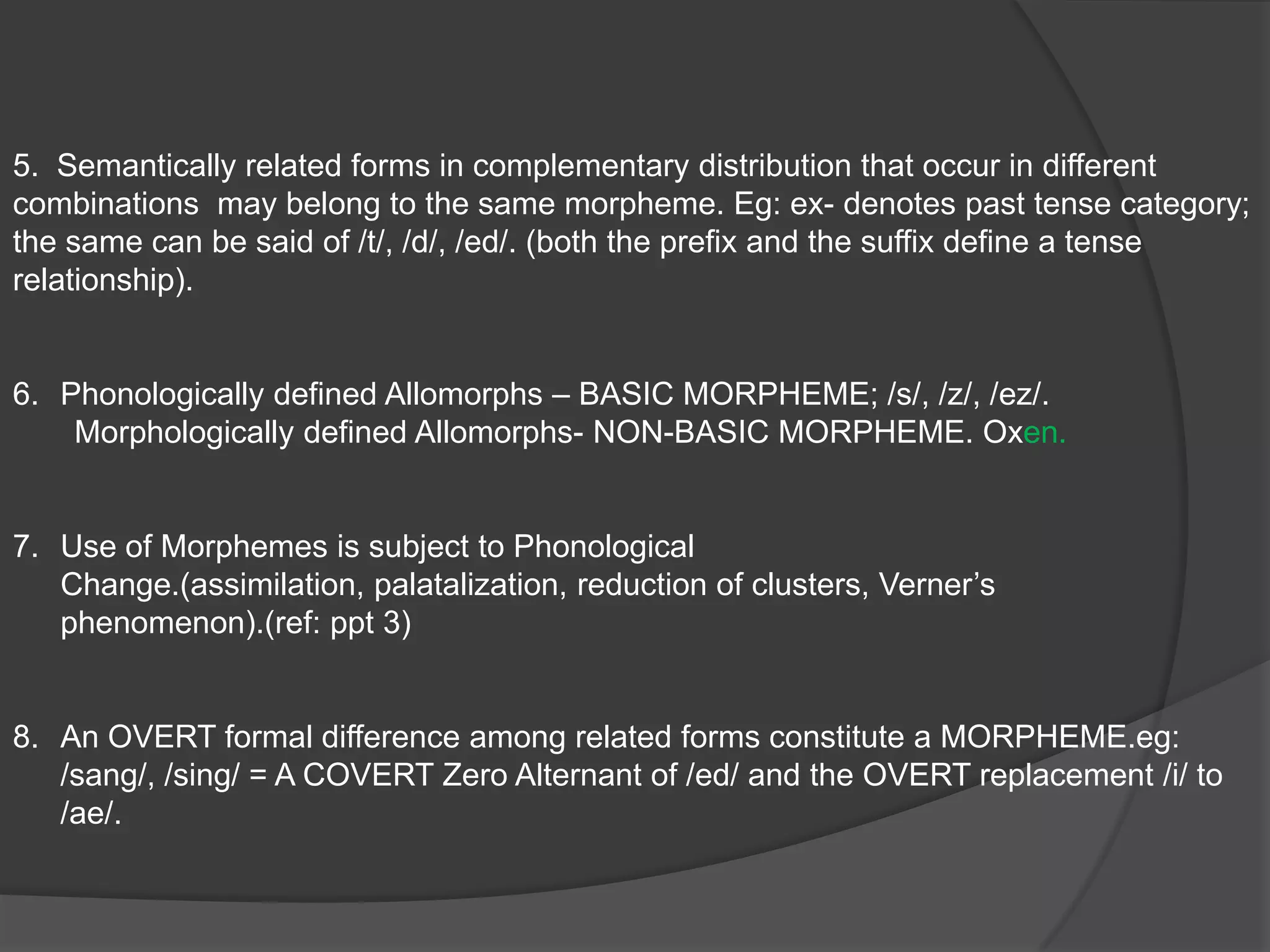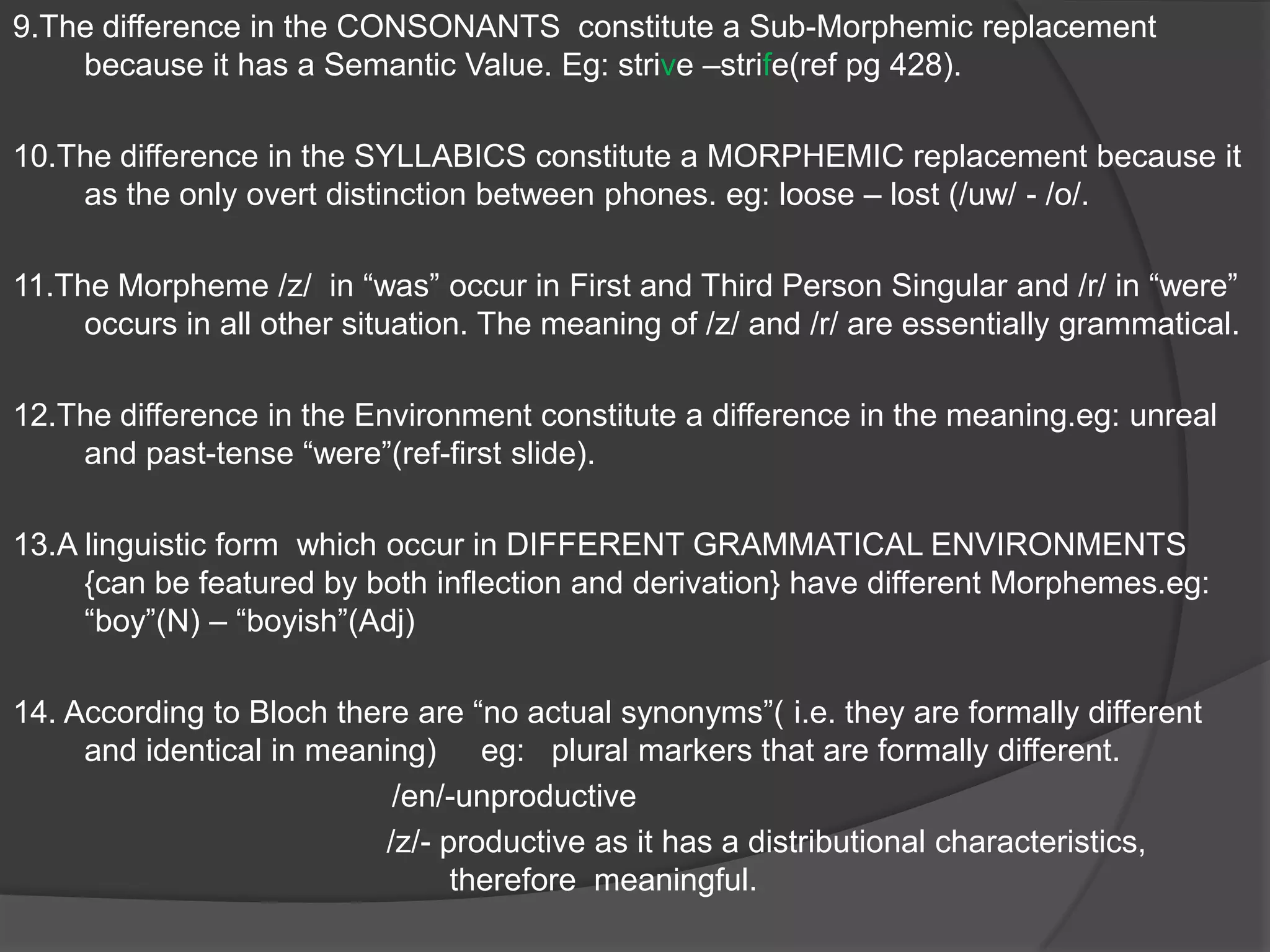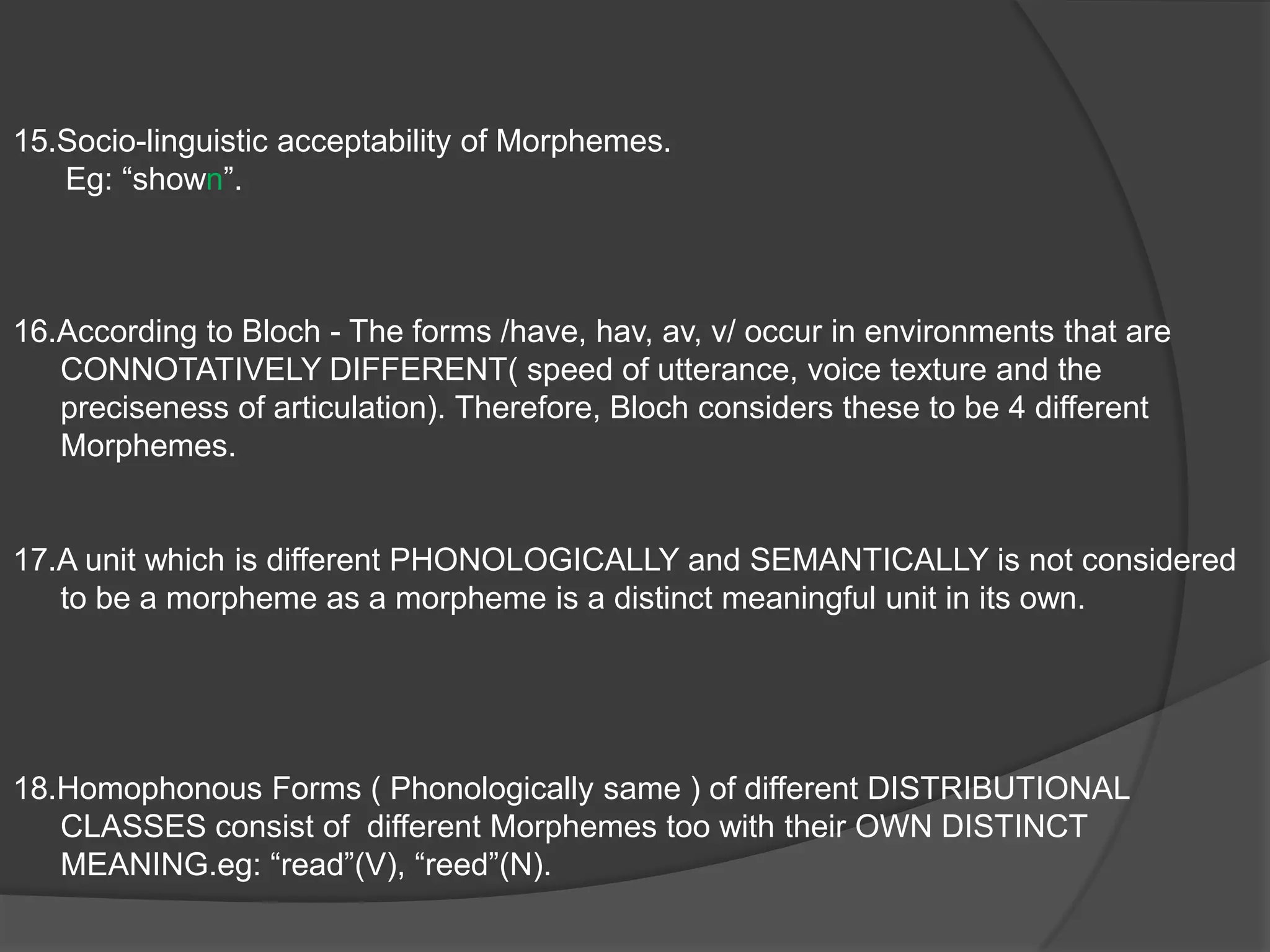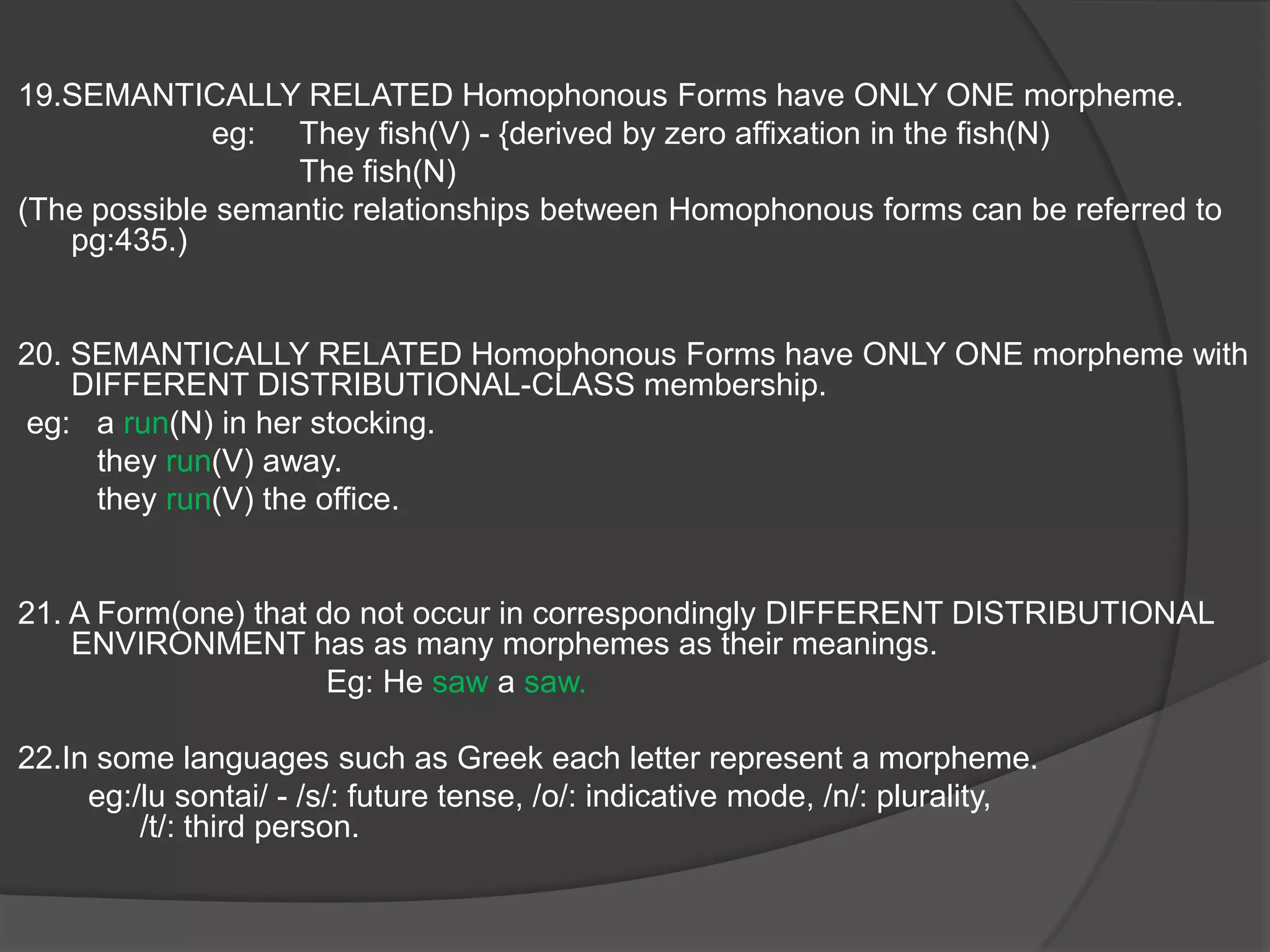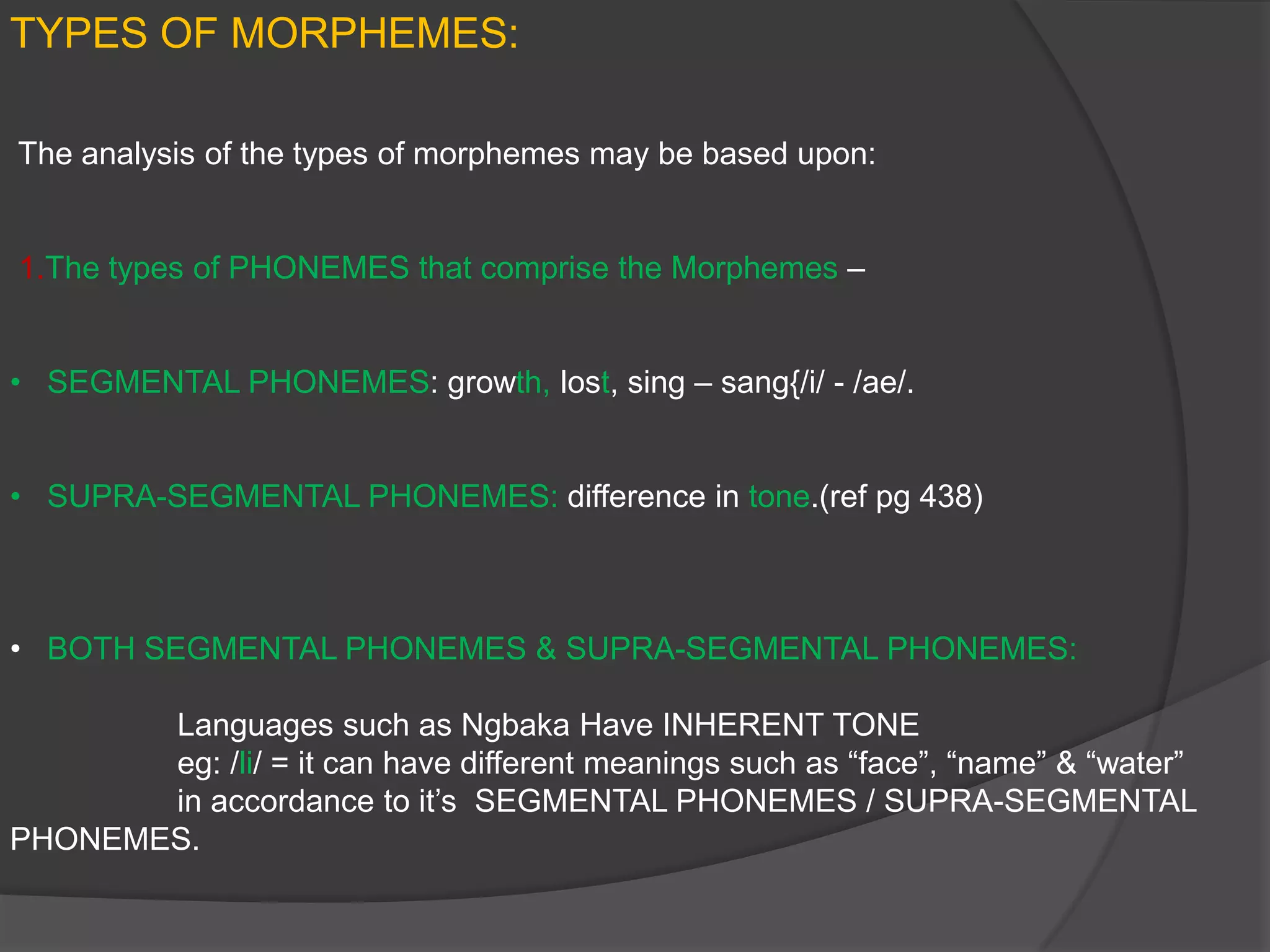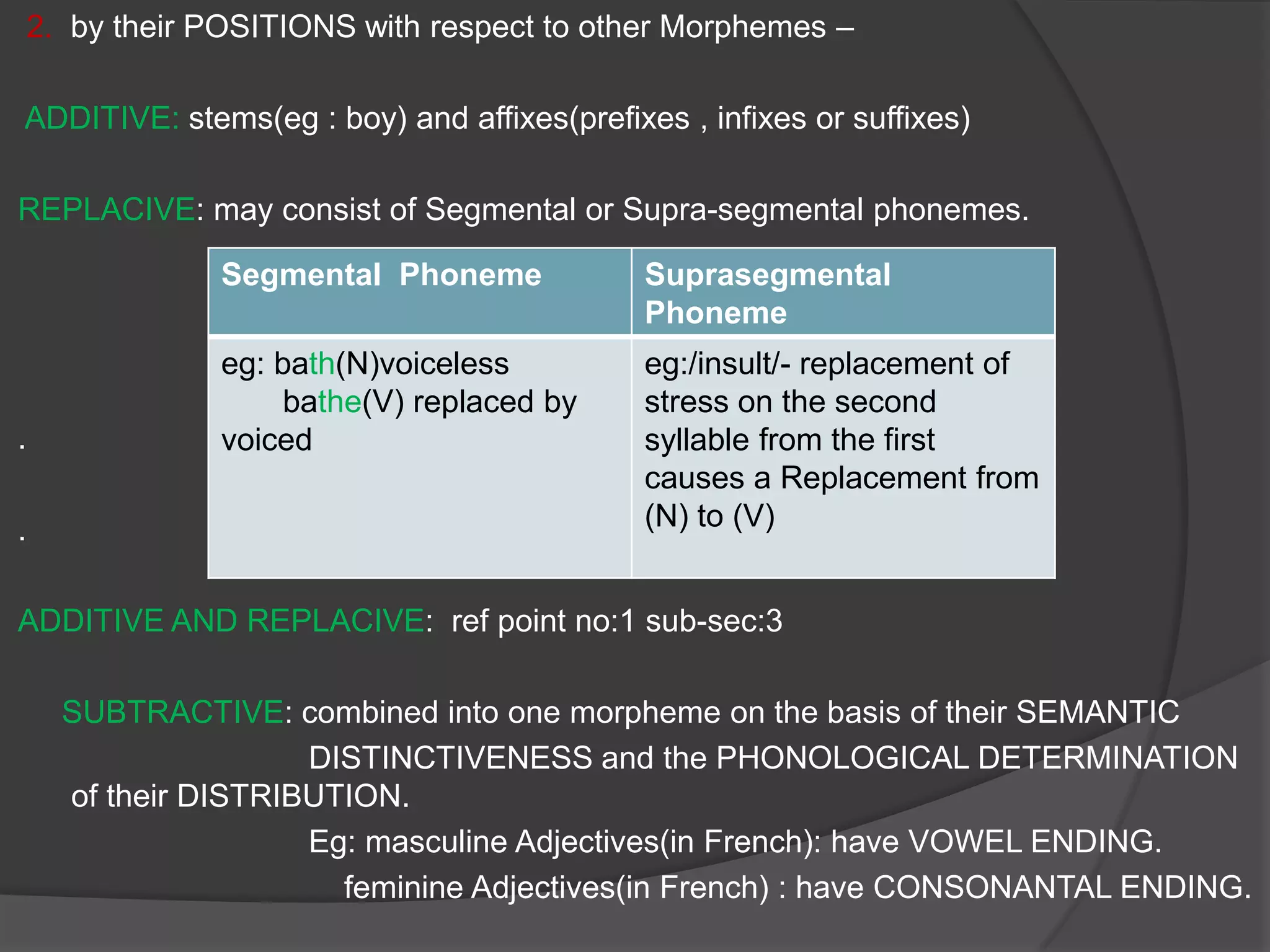The document discusses the concept of morphemes as the smallest units of meaning or grammatical function, citing the works of linguists like Hockett and Bloch. It explores various theories, types of morphemes, their phonological and semantic distinctions, and provides examples of their complexities in language. Additionally, it highlights challenges in defining morphemes and presents theoretical principles to understand their relationships and variations across different languages.
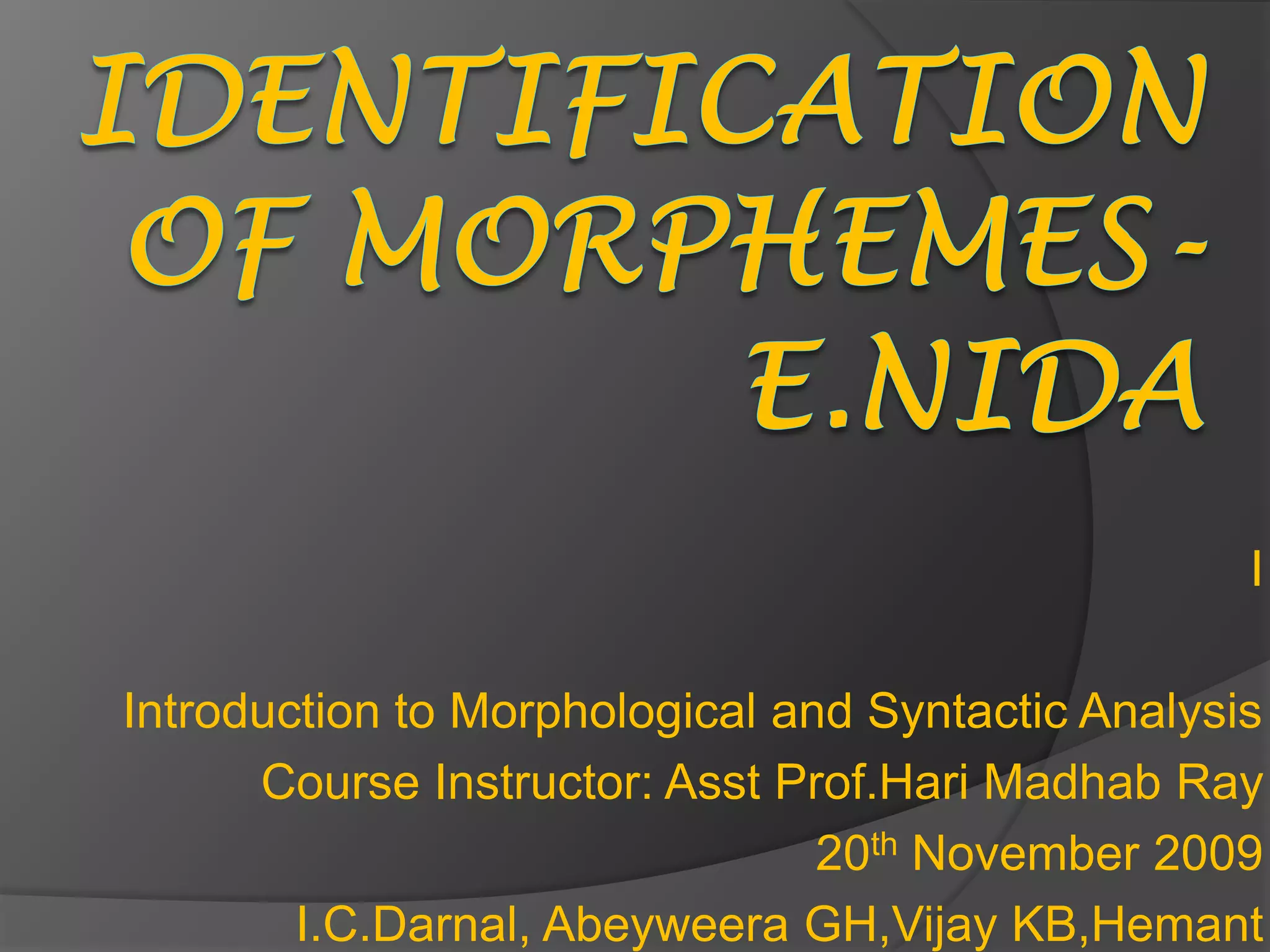
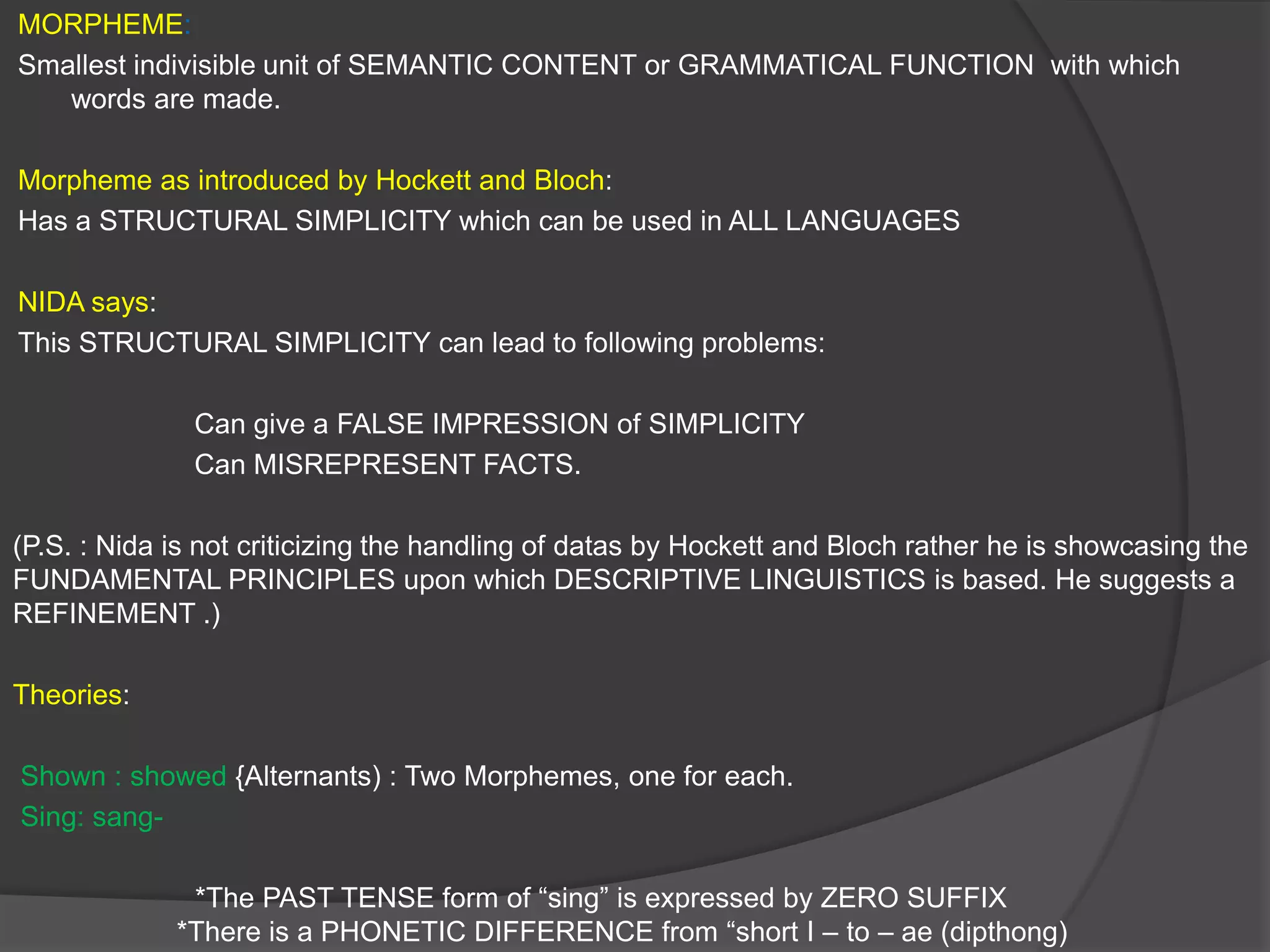
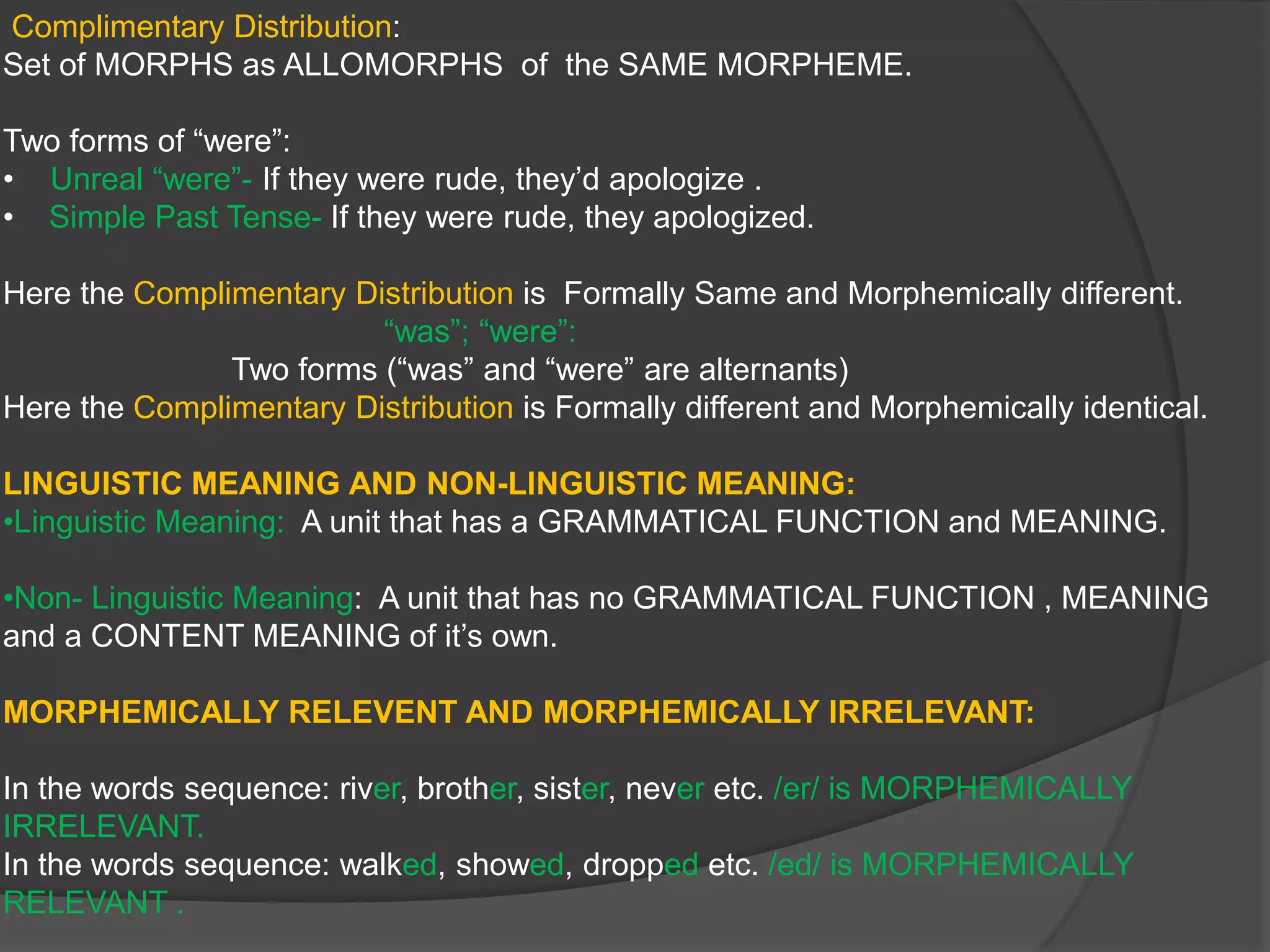
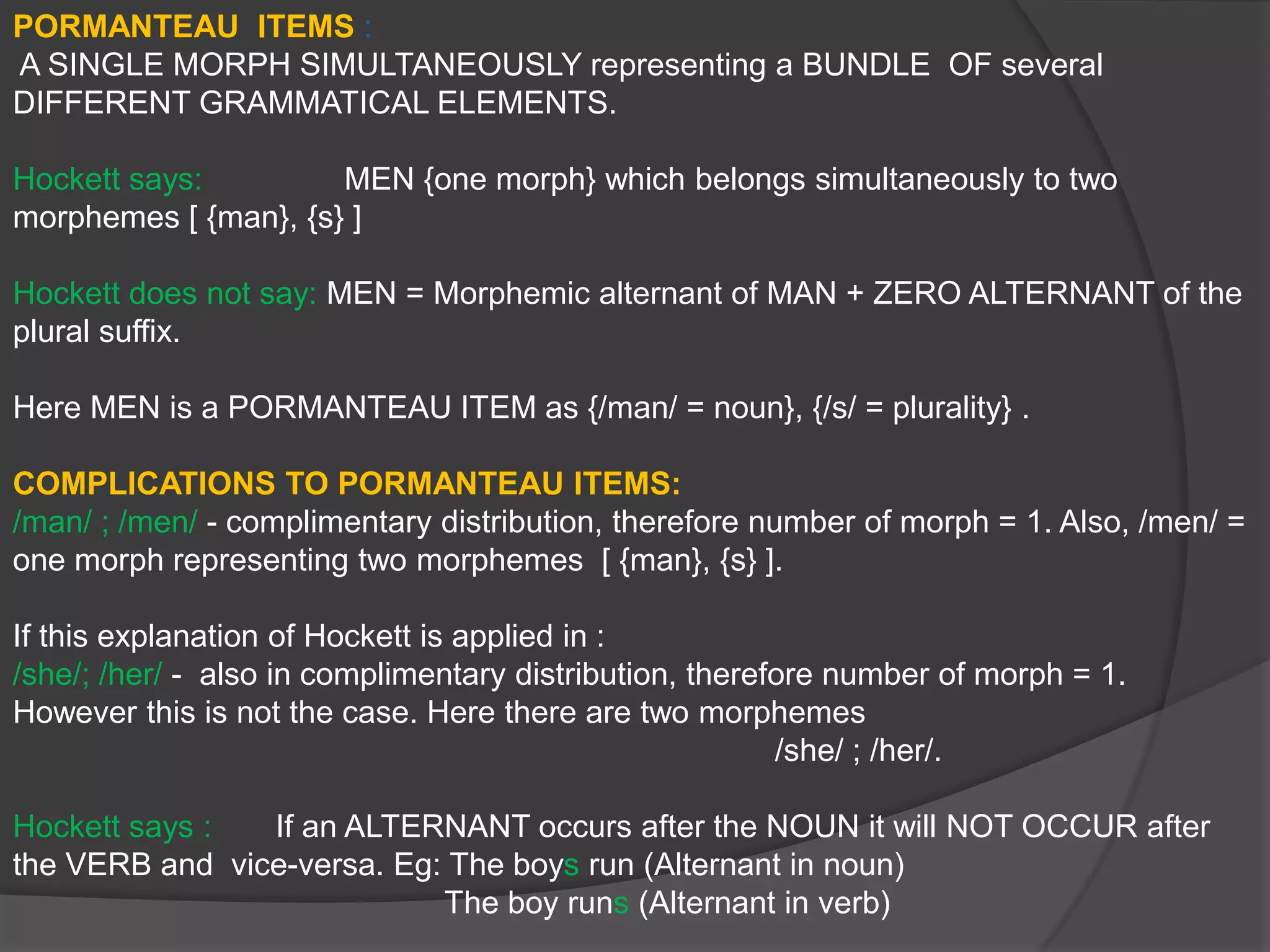
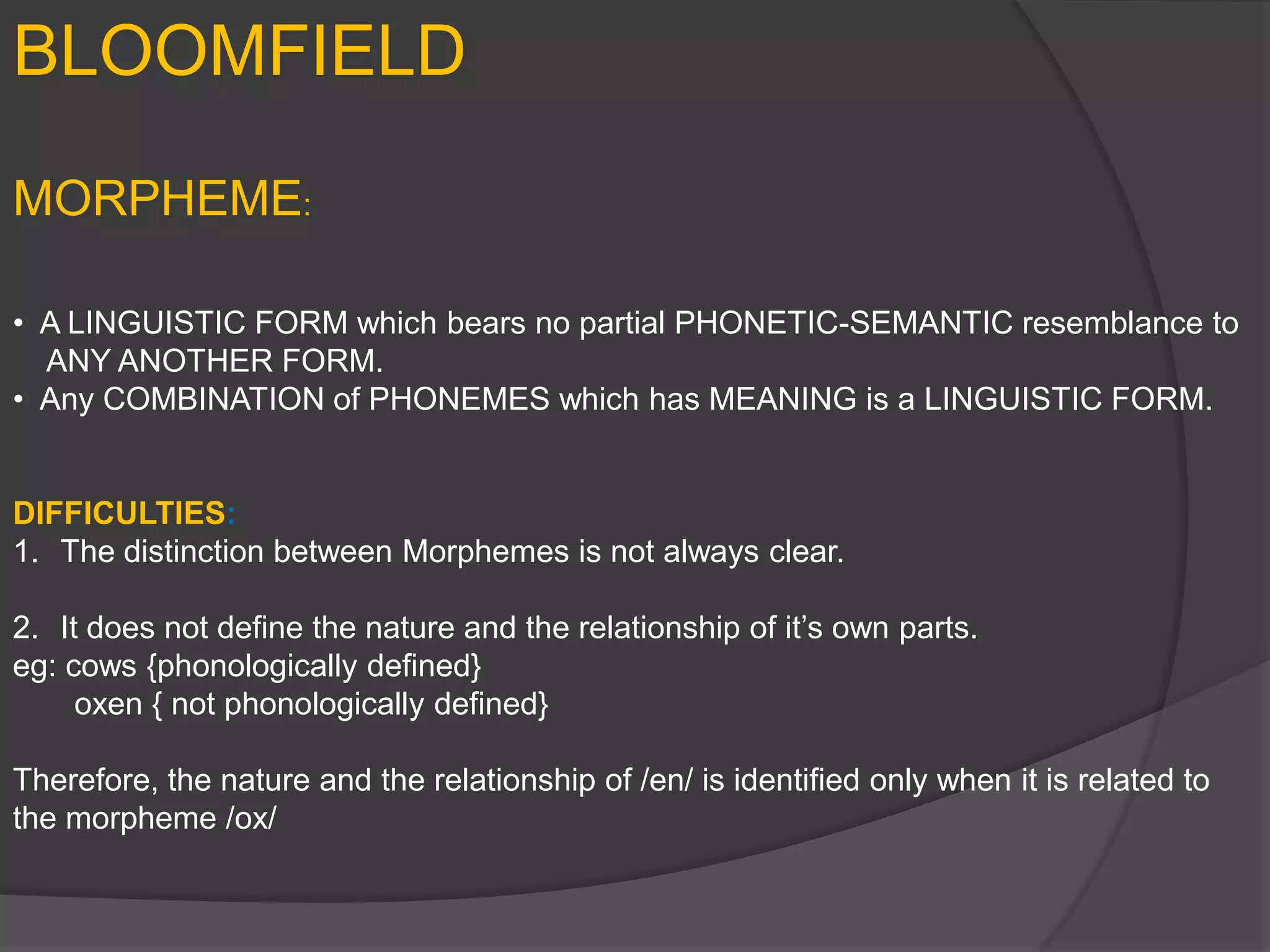
![PORMANTEAU ITEMS : A SINGLE MORPH SIMULTANEOUSLY representing a BUNDLE OF several DIFFERENT GRAMMATICAL ELEMENTS. Hockett says: MEN {one morph} which belongs simultaneously to two morphemes [ {man}, {s} ]Hockett does not say: MEN = Morphemic alternant of MAN + ZERO ALTERNANT of the plural suffix.Here MEN is a PORMANTEAU ITEM as {/man/ = noun}, {/s/ = plurality} .COMPLICATIONS TO PORMANTEAU ITEMS:/man/ ; /men/ - complimentary distribution, therefore number of morph = 1. Also, /men/ = one morph representing two morphemes [ {man}, {s} ].If this explanation of Hockett is applied in : /she/; /her/ - also in complimentary distribution, therefore number of morph = 1. However this is not the case. Here there are two morphemes /she/ ; /her/.Hockett says : If an ALTERNANT occurs after the NOUN it will NOT OCCUR after the VERB and vice-versa. Eg: The boys run (Alternant in noun) The boy runs (Alternant in verb)](https://image.slidesharecdn.com/identificationofmorphemes-091127174030-phpapp01/75/Identification-Of-Morphemes-6-2048.jpg)
